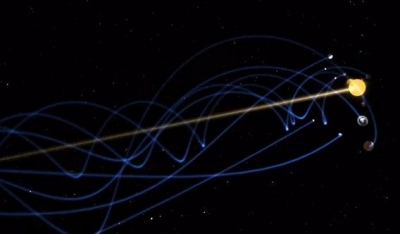
During the 1700s after a great deal of hard work astronomers were able to calculate the speed and direction of many stars. By 1805 the astronomer Herschel proved that the Sun itself was subject to the same laws of movement. We now know that the Sun with its whole accompaniment of planets travels through space at the terrifying speed of about 270 kilometres a second together with the whole galaxy in which the solar system lies. The Sun also travels along a path of its own which is directed at a point in the heavens near the star Vega.
Herschel had studied the distant nebulae which astronomers before him believed to be millions of stars. Even the Milky Way was a nebula, but it was much brighter than the others and therefore must be nearer.
Herschel then thought that the Sun, like hundreds of other stars visible from the Earth, was part of huge nebula, separate from all the others and forming a universe of its own: the galaxy.
During the 1870s the first powerful telescopes found other nebulae outside the galaxy and this proved that Herschel was right. New searches were made in our own century with the installation of the Mount Wilson telescopes in 1905 and the one at Mount Palomar in 1948.Today we can even begin to draw a map of the galaxy. It appears to be shaped like a 100,000 light years (one light year is equal to 10 million kilometres) and contains about 100,000 million stars.
Picture Credit : Google



